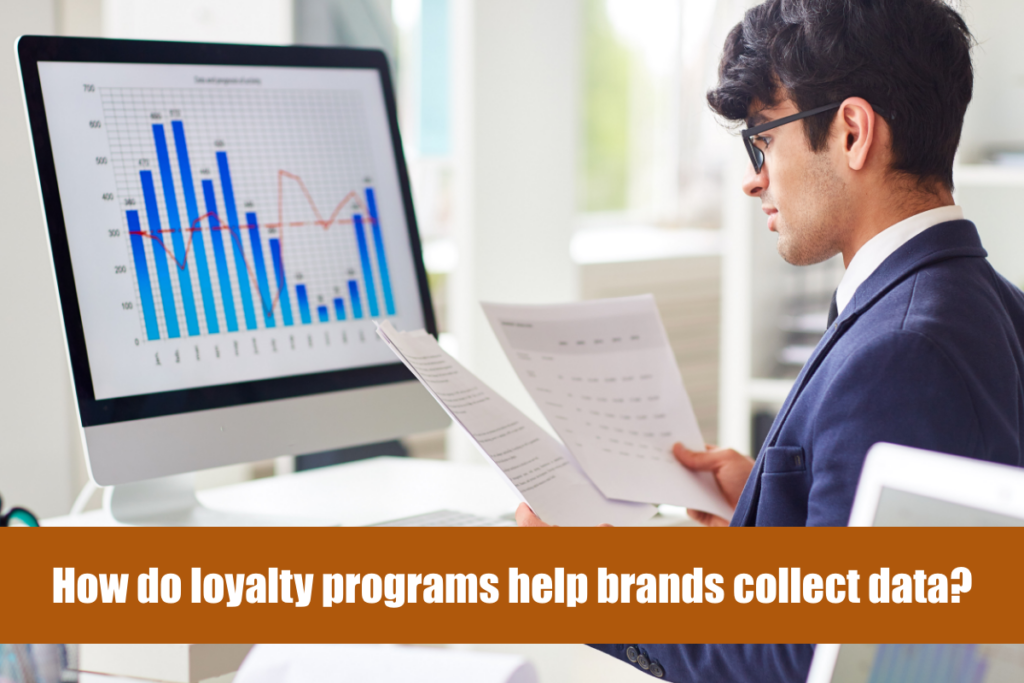With data-driven transformations driving customer retention trends, brands need to understand where they stand on the scale of digital maturity. It begins with understanding the best ways to collect authentic data and using the data constructively. Loyalty programs are one of the most effective ways to collect authentic zero and first-party data. Customer Data Platform (CDPs) has emerged as a central data repository and a single source of truth. So, what should you implement first? This blog covers the methods of collecting data and the important factors which can help brands decide between a CDP and a loyalty program.
By: Jai Rawat, Zinrelo
The demand for personalized customer experience has grown exponentially. Personalization requires capturing mountains of user data. Rising privacy concerns have put a question on many traditional ways of data collection. Users are also increasingly conscious about data collection and usage. A recent survey by Marketing Charts states that 74% of customers favor brands that make them feel comfortable about their data’s use.
According to Forbes, businesses focusing on customer experience rake up 5.7X higher revenue than competitors. With increased consumer awareness about data privacy, the cookie-less world of the future, and Apple’s new privacy settings, collecting accurate and meaningful data is more challenging than ever before. Also, data collection and management must be simplified, and this data must be meaningful to deliver the insights that can be applied at the right time.
Loyalty programs are one of the best avenues for collecting rich customer data. By engaging directly with customers, loyalty programs can collect valuable data. Furthermore, a loyalty program enables brands to improve customer experience with less effort.
Still, the whole story revolves around collecting, refining, and making sense of the data. Data collected directly from the customers or derived from their behavior is more valuable and precise compared to generic profile buckets. These are called Zero-party data and first-party data. Let’s understand them first.
Types of customer data
1) Zero-party data
Zero-party data refers to information proactively shared by customers. It can include personal or profile information, preferences & purchase intentions. Unlike cookies or reverse IP lookup, customers voluntarily share this data with the brands. Zero-party data is quickly gaining traction against third-party data because of the authenticity associated with it.
A common example of zero-party data is when a brand asks customer's their birthday to provide them with a special gift. Customers share their date of birth in anticipation of the promised gift.
2) First-party data
First-party data is primarily inferential or derived information like customer preferences, buying behavior, purchase history, or past purchasing habits. Using this data, brands can create ads catering to individual demands. This data is collected via websites, apps, CRM or call center systems, and so on.
Essentially, first-party data is collected with the customer’s consent.
However, unlike zero-party data, here brands do not collect data directly by asking the customers. Instead, they monitor a customer's actions while on the website to get a better idea about their buying behavior. Customer information here can include email addresses, purchase history, preferences, and more.
3) Third-party data
Third-party data can be collected without the knowledge or consent of the customers. Brands typically use third-party data companies to collect and aggregate customer data. It includes aggregated information about a broader group, of which customers are a subset
Since there is no direct connection with customers, this data is the least accurate and might not be taken with customer consent too. Sources for collecting third-party data can include websites, social media channels, government censuses, and subscriptions. This data can be good for customer acquisition but is not reliable for retaining and enhancing value from existing customers.
Going forward with advanced technology, zero-party, and first-party data is the priority. However, all this data goes in vain if it is not managed properly. Customer data platforms help manage this data efficiently.
What is a customer data platform?
A customer data platform (CDP) is software that collects customer data from multiple sources and helps in analyzing and making sense of the data. This data is then combined to create a single comprehensive profile of each customer. Brands can analyze, track, and manage this data to create a personalized customer experience. Because of this, many large-scale industries are adopting customer data platforms. The CDP market value is expected to grow up to USD 15.3 billion by 2026. (Markets and Markets)
The software uses multiple zero and first-party sources to integrate data and build customer profiles. These sources include CRM systems, data management platforms, transactional systems, social media activity, website data, etc. With CDPs, the data is accessible to various software allowing firms to avoid data silos.
IBM is a great example of scaling customer data infrastructure with CDP. They used a single platform for in-depth customer data analysis. The platform helped IBM Cloud to drive conversions, engagement, and expansion. IBM Cloud increased its revenue by 70% in 3 months by uncovering expansion opportunities using reliable customer data.
Though a CDP solves various problems, a brand needs to first evaluate its digital maturity to determine its feasibility and applicability of a CDP. Some of these considerations are:
1) Driving adoption of new tools and processes: Using new tools & setting new processes can be difficult for employees to get used to and pose challenges like resistance to change. Brands need to conduct training workshops and evaluate the progress to ensure a smooth transition to new processes.
2) Continuous evolution of customer needs: The pace of evolution has accelerated in recent years. Consequently, customer needs and priorities are changing at the same time. Brands need to consider change as an important factor and should focus on agile solutions.
3) Complex software and technology: New technologies can be intimidating. This is a challenge for organizations undergoing digital transformation not just from an implementation & data integration perspective but also from an end-user experience perspective.
4) Lack of a well-defined strategy: There is no universal strategy that works for every brand. For collecting data or managing it, every brand works in its own way. It becomes essential to have a well-defined strategy to get desired results.
5) Most importantly, the availability of data: The volume, variety, and velocity of data are critical to build a strong foundation.
Deploying a CDP becomes far more challenging for organizations that are in the nascent phase of digital maturity. Instead, modern-day loyalty platforms can be deployed easily.
How do loyalty programs help brands collect data?
Brands invest in loyalty programs that offer rewards, discounts, and other unique incentives to acquire and retain customers. These programs encourage repeat business by rewarding customers for sticking with a retailer or brand.
Many businesses use loyalty programs with only one objective in mind- customer retention. They completely overlook the potential of collecting valuable customer data using loyalty programs.
Here is an interesting example of Black Box Wines, a premium wine brand using a loyalty program to collect customer data. Black Box Wines collected Zero-party data in their loyalty program, ‘Black Box Rewards’ at the time of profile creation with questions that collected information on customers’ preferences and frequency of buying wines. They also included a survey to capture members’ feedback about their loyalty program structure.
What should marketers invest in first: CDP or loyalty program?
Both loyalty programs and customer data platforms are effective in collecting & managing data. This leads to the question most marketers face —whether they should first invest in having a CDP or a loyalty program. Here are some key points that can help marketers answer this question.
1) Quality of data
The quality of data is crucial in every business process. If the data collected is not legitimate, it can cause issues for the brand. With poor quality data investing in a CDP will not help. It will be better to invest in data collection instead. A loyalty program is one of the best ways to collect quality data and improve customer retention.
2) Quantity of data
A simple rule of thumb is that, if the percent of all unique customer transactions, that can be mapped to an individual on a 12-month basis is less than 30%, then a CDP is not viable “ahead” of a loyalty program. This metric tells whether the data collected is enough to invest in CDP or not. If the data falls below the expected range, it may not be the right time to opt for a CDP.
3) Personalization
A business must be able to employ personalization, curated experiences, and targeted exclusivity. In addition, it should be able to display products aligned to interests informed by historical knowledge, modeling, or segmentation. If these capabilities drive an organization’s performance today, pursuing a CDP is better. This is because the enterprise has a MarTech stack that is mature or operating as a customer-centric retailer.
However, if the above MarTech stack is not in place and there are gaps, the business should analyze its existing marketing strategies. Segmentation strategies should be implemented to acquire new customers and target existing customers to drive revenue. It is here that a loyalty program can be a game-changer in focusing on a highly personalized approach to marketing efforts.
Conclusion
Do the above points answer the critical question? Well, it may not give you a “YES” or “NO” answer but can help you in the decision-making process. Depending on the digital maturity of an organization and the stage at which they are in, the next steps should be taken.
Having a foundation of a strong customer base and an ongoing loyalty program makes the installation of CDP easier. That is why retailers typically invest in a loyalty program first. After effectively achieving permission-based engagement, brands can utilize CDP to optimize personalization. But for permission-based marketing, brands must have customers' trust, which can be earned through loyalty programs.
Starting with a loyalty program sounds great as it brings the customer close to your brand. The marketing and sales team can learn incredibly about customer behavior and make rich and informed decisions. Modern loyalty programs are data-driven and can help marketers take strategic decisions to drive brand loyalty.
In the journey to obtain and strategically utilize data, Zinrelo is empowering global brands to launch a highly optimized and data-driven rewards program.
Jai Rawat is Co-founder & VP of Product Strategy at Zinrelo. He is a successful serial entrepreneur with over 24 years of industry experience. Extensive experience in building early-stage startups into market leaders. Received several awards and accolades for both business leadership and technical prowess. 19 patents granted with several additional patents pending. Mentor, and advisor to several startups and entrepreneurs.





